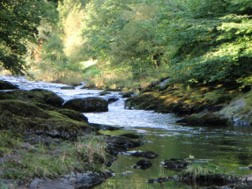
West Wales Rivers Trust – Doethie and Upper Tywi Restoration Projects
An article by Brian Jones.
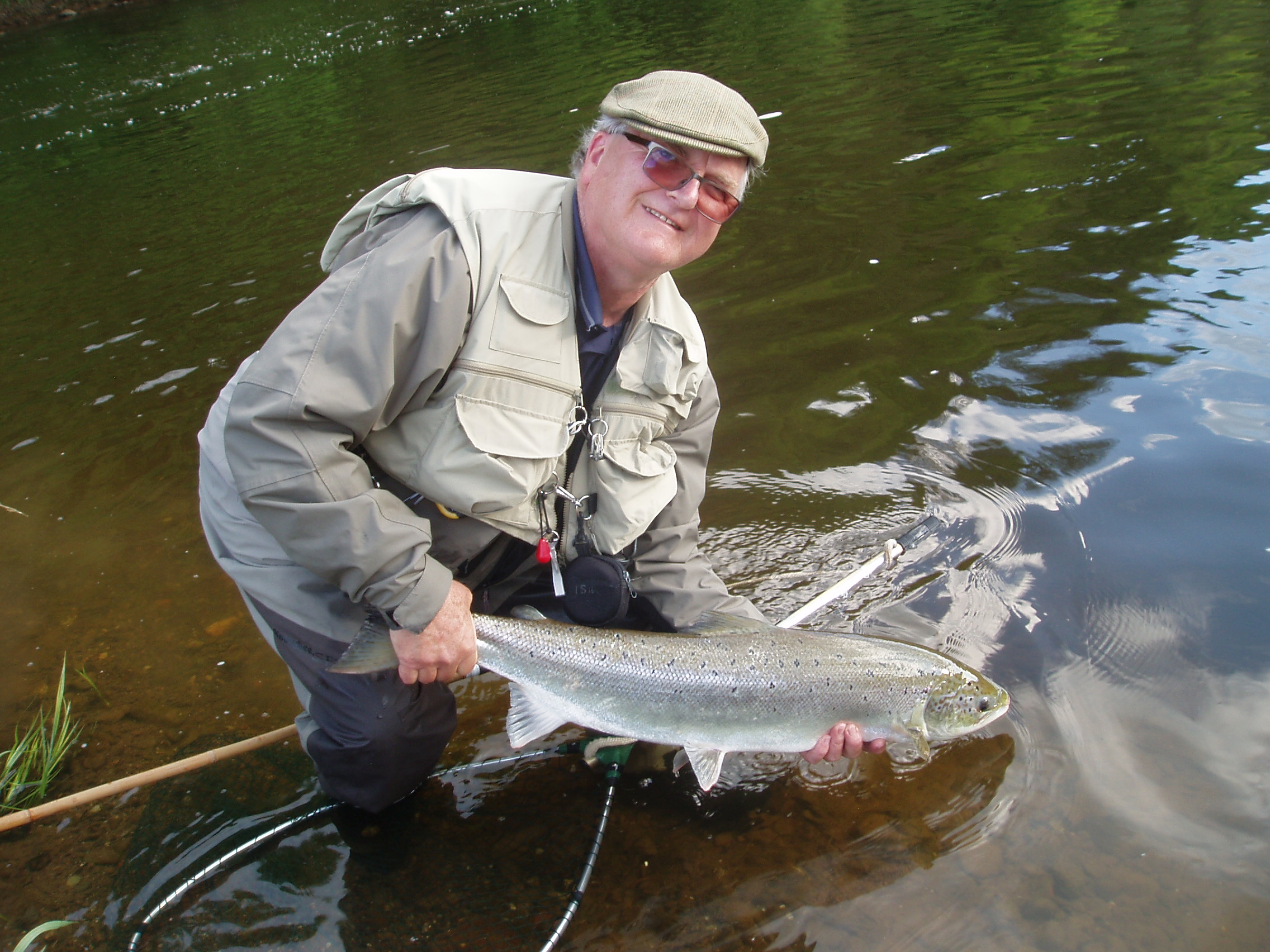
The following is a brief summary of remediation work carried out on the River Doethie tributary of the River Tywi in recent years.
The Water Framework Directive criteria indicate that the upper River Tywi in North Carmarthenshire is failing because of … “episodic acidification exacerbated by commercial conifer forest and toxic heavy metal contamination from disused lead mines.” It is generally acknowledged that in spite of reducing emissions in recent years acid episodes are likely to continue in some conifer forest streams for the foreseeable future.
These upper river reaches include the spawning grounds of many of the large spring sea trout that once made the Tywi a world-famous fishery. Numbers of the large multi-sea-winter spring and early summer salmon that were a significant feature of the Tywi fishery also spawned here. These genetically unique populations of salmonids run the river early in the year and travel far up into these headwaters to spawn in late autumn and early winter.
The construction of the Brianne Dam in the nineteen seventies resulted in the loss of extensive spawning gravels in the main upper Tywi and in the River Camddwr – a major headstream tributary.
 Only the River Doethie remained as a significant headstream tributary accessible to these migratory salmonids. This greatly increased the Doethie`s importance as a headwater salmonid nursery.
Only the River Doethie remained as a significant headstream tributary accessible to these migratory salmonids. This greatly increased the Doethie`s importance as a headwater salmonid nursery.
Unfortunately, it soon became apparent that the Doethie, together with the Tywi and Camddwr, were being adversely affected by acidification caused by air pollution and exacerbated by the extensive maturing conifer forest plantations in the surrounding uplands. The conifer trees collected and concentrated acid rain from the surrounding atmosphere, passing it into the peaty soils.
Because the underlying rocks and soils in these hills are base poor there were only very limited concentrations of minerals containing the calcium and magnesium ions capable of neutralising the highly acidified water accompanying high episodic flows following heavy rain. Fifty years of accumulating acidification have devastated this river ecosystem.
Stormwater entering the rivers at such times was very acid with pH values sometimes falling to below pH4 (water like vinegar!). River water with a pH below 5.5 cannot support healthy juvenile salmonid populations, and the enzyme that enables salmonid alevins to hatch through the egg membrane is denatured in such flows leaving the juveniles to die, trapped and buried in the gravels.
In addition, these acid episodes wash out aluminium from the soil`s base poor mineral horizons (beneath surface peat/organic soil layers). The aluminium and the acid water together affect the gills of juvenile fish and are toxic also to their invertebrate food.
 Smolts exposed to high aluminium levels in these conditions, sometimes for as little as only a few hours during the weeks when they are silvering up before migrating, may be unable to adjust their bodies to cope with the change from fresh to saltwater. Research in Norway has demonstrated that affected smolts that may appear healthy in the river can suffer a mortality rate as high as 70% on entering the sea.
Smolts exposed to high aluminium levels in these conditions, sometimes for as little as only a few hours during the weeks when they are silvering up before migrating, may be unable to adjust their bodies to cope with the change from fresh to saltwater. Research in Norway has demonstrated that affected smolts that may appear healthy in the river can suffer a mortality rate as high as 70% on entering the sea.
Sadly on the Doethie and upper Tywi, within a few years of the completion of the dam, salmonid numbers fell dramatically and have not recovered over recent decades during which UK salmonid numbers generally have shown further declines.
Kick sampling of river reaches on the Doethie sub-catchment confirmed that river invertebrate numbers were also greatly reduced. Those most affected were the acid-sensitive groups such as the nymphs and larvae of olive upwings and sedge flies that form an important food source for juvenile salmonids. In many reaches, only very small numbers of the most acid-tolerant river fly species remained.
This situation continued until Rivers Trust volunteers began investigating the polluting effects and instigated a programme of remediation by liming – applying crushed limestone sand directly into the Doethie`s headstreams at carefully selected sites.
The sand lies inert amongst the riverbed gravels for much of the time. When, after heavy rain, river flow rates increase the sand is mobilised and eroded releasing calcium that, by neutralising acid and aluminium toxicity, maintains a healthier microhabitat and pH amongst the gravels where eggs have been deposited and where juvenile fish and invertebrates are sheltering. The lime also helps to ameliorate the toxic effects of any lead and other heavy metals leached from the disused lead mines.
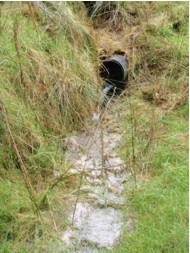 The Tywi and Camddwr rivers upstream of the Brianne dam had been provided with lime dosers to raise the pH of water entering the reservoir. Following Rivers Trust involvement the doser liming operation was significantly improved with the pH of water leaving the reservoir and entering the Tywi increasing from below pH 5 to above pH 6 in recent times.
The Tywi and Camddwr rivers upstream of the Brianne dam had been provided with lime dosers to raise the pH of water entering the reservoir. Following Rivers Trust involvement the doser liming operation was significantly improved with the pH of water leaving the reservoir and entering the Tywi increasing from below pH 5 to above pH 6 in recent times.
However, with limed Tywi and Camddwr water held back by the dam the Doethie`s highly acidic flows after heavy rain continued to have a major impact on upper Tywi water quality and biodiversity.
The West Wales Rivers Trust believed that restoring the Doethie`s sea trout and salmon populations, invertebrate diversity and water quality would represent a significant contribution to the ecological recovery of the upper Tywi and also to mitigation for the loss of the extensive spawning grounds following the completion of the Brianne dam.
The Doethie (and its Pysgotwr tributary) has therefore been in-river sand limed by Rivers Trust volunteers every year for 7 years at selected upstream sites, with improvements achieved downstream in water quality (minimum episodic pH value of 5.5 compared with previous values down to < 4) and in the numbers and diversity of aquatic invertebrates e.g. April 2017 kick sample (3 min.) on two headstreams: un-limed stream 8 species, 20 individuals in total; limed stream 11 species, 87 individuals in total (additional spp. restored in the limed stream included sedge/caddis, up-wing and stonefly species).
The main problem for the recovery of fish populations, however, is the continuing occurrence and effects after the rain of high flow acid episodes (even if of very short duration) that need to be further reduced by improving the existing liming strategy so that the aluminium is rendered less toxic by ensuring that river water remains above pH6 at all times.
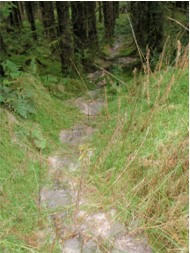 In-river sand liming is known to be the most effective way of treating episodic events. A major problem, however, is the lack of access to effectively sand-lime all of the Doethie`s headstreams and tributaries. This is essential as acid water from un-limed tributaries can, on entering a limed river, result in large amounts of treated aluminium being suddenly converted back into a toxic form where improvement in water quality and biodiversity would otherwise be expected.
In-river sand liming is known to be the most effective way of treating episodic events. A major problem, however, is the lack of access to effectively sand-lime all of the Doethie`s headstreams and tributaries. This is essential as acid water from un-limed tributaries can, on entering a limed river, result in large amounts of treated aluminium being suddenly converted back into a toxic form where improvement in water quality and biodiversity would otherwise be expected.
Forestry roads can, however, provide access to forestry ditches conveying acid run-off to streams. These roads, being raised above the forest floor, have gullies on either side. Much of the acid run-off from conifer afforested hills reach the river by passing into the roadside gullies and then through the culverts beneath the roads and into and along forestry ditches.
The Trust, therefore, decided to pilot the application of crushed limestone to the roadside gullies and scour holes next to the ends of the culverts in order to reduce acidity and aluminium toxicity in the storm flows entering the ditches and flowing to the rivers.
Restoring more natural hydrology would also be necessary to further reduce episodic effects by slowing down run-off from afforested hills and reducing peak flow surges into streams after rain. Inserting permeable dams at intervals into roadside gullies and ditches and perhaps blocking ditches during clear-fell harvesting should help to achieve this.
 Research has indicated that toxic aluminium can also be leached into stormwater from the mineral soils exposed at the bottom and sides of forestry drainage ditches. Ensuring that lime reaches the ditches during episodic flows could prove to be effective in reducing the toxicity of aluminium even before it reaches the river. Remaining aluminium toxicity entering rivers would be treated with increased in-river limestone sand applications at sand application sites.
Research has indicated that toxic aluminium can also be leached into stormwater from the mineral soils exposed at the bottom and sides of forestry drainage ditches. Ensuring that lime reaches the ditches during episodic flows could prove to be effective in reducing the toxicity of aluminium even before it reaches the river. Remaining aluminium toxicity entering rivers would be treated with increased in-river limestone sand applications at sand application sites.
The Trust was pleased to learn that much clear-felling of conifers is to take place in this catchment over the next couple of years and hopes that replanting with conifers will be discontinued along riverbanks and where peat deposits need to be conserved. It believes that liming watercourses and their afforested sources, where possible before tree harvesting, will help to limit ecological damage from the increased acidification and toxicity that can accompany clear felling. Where harvesting might damage dams newly inserted by the Trust, or result in changes to roads, gullies and ditches, restoration work planned for some areas might need to be postponed until after clear-fell.
The Trust successfully applied for Leader + funding available for piloting innovative approaches to river restoration in afforested catchments. It also succeeded in getting a revised NRW discharge consent for an improved liming regime. With support from NRW fisheries and forestry staff, the Carmarthenshire Fisheries Federation, Carmarthenshire County Council and Dwr Cymru Welsh Water some elements of the Trust`s six project restoration plan for the Doethie were selected for a 2 year pilot in three areas of the forest. Work began in October 2017 led by our project officer (Caroline Orr, MSc biologist) working with volunteers and supported by a manager and advisors.
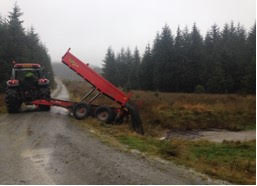 The pilot focusses on liming roadside gullies adjacent to culverts, on damming selected gullies and ditches, and liming ditches conveying stormwater to streams (Dosage rate: approx. 500 tonnes at 30 t/ha). In-river limestone sand dosages will be increased from 68 to 187 tonnes per year. Follow-up habitat improvement work will include the planting of broadleaf trees on the riparian buffer zones created along conifer harvested river banks.
The pilot focusses on liming roadside gullies adjacent to culverts, on damming selected gullies and ditches, and liming ditches conveying stormwater to streams (Dosage rate: approx. 500 tonnes at 30 t/ha). In-river limestone sand dosages will be increased from 68 to 187 tonnes per year. Follow-up habitat improvement work will include the planting of broadleaf trees on the riparian buffer zones created along conifer harvested river banks.
Detailed monitoring will be essential to measure success achieved by these pilot project strategies. Monitoring completed in annual MSc research projects over the seven-year period has already indicated a significant improvement in water quality and in invertebrate numbers and diversity since liming began.
 Continuous in-river monitors indicated that during 2017 pH levels were maintained above pH 6 with the exception of a few major episodic events. It is the damaging effects of these remaining events following big storms, probably associated with climate change, that now need to be eliminated. Comparative analysis of river sediments in summer 2017 demonstrated significant increases in calcium levels and decreases in toxic aluminium levels downstream of in-river sand liming sites.
Continuous in-river monitors indicated that during 2017 pH levels were maintained above pH 6 with the exception of a few major episodic events. It is the damaging effects of these remaining events following big storms, probably associated with climate change, that now need to be eliminated. Comparative analysis of river sediments in summer 2017 demonstrated significant increases in calcium levels and decreases in toxic aluminium levels downstream of in-river sand liming sites.
The Doethie was one of the very few river sites in Wales demonstrating a positive trend in salmon fry numbers during the summer 2016 NRW/WUF juvenile salmonid monitoring programme (though admittedly from a low starting baseline). The Trust is confident that this pilot will result in further significant improvements in water quality and biodiversity and hopes that in the future recovery of salmonid fish populations will follow.


